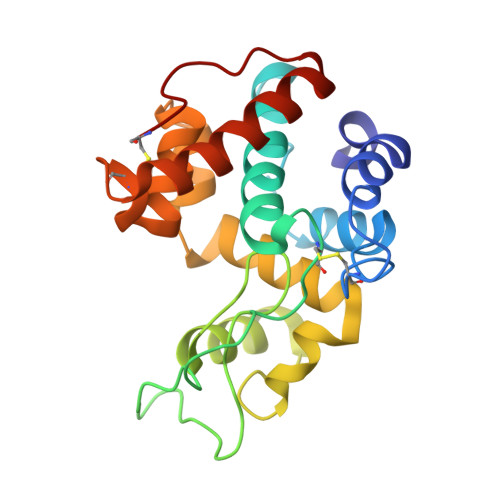The first crystal structures of a family 19 class IV chitinase: the enzyme from Norway spruce.
Ubhayasekera, W., Rawat, R., Ho, S.W., Wiweger, M., Von Arnold, S., Chye, M.L., Mowbray, S.L.(2009) Plant Mol Biol 71: 277-289
- PubMed: 19629717
- DOI: https://doi.org/10.1007/s11103-009-9523-9
- Primary Citation of Related Structures:
3HBD, 3HBE, 3HBH - PubMed Abstract:
Chitinases help plants defend themselves against fungal attack, and play roles in other processes, including development. The catalytic modules of most plant chitinases belong to glycoside hydrolase family 19. We report here x-ray structures of such a module from a Norway spruce enzyme, the first for any family 19 class IV chitinase. The bi-lobed structure has a wide cleft lined by conserved residues; the most interesting for catalysis are Glu113, the proton donor, and Glu122, believed to be a general base that activate a catalytic water molecule. Comparisons to class I and II enzymes show that loop deletions in the class IV proteins make the catalytic cleft shorter and wider; from modeling studies, it is predicted that only three N-acetylglucosamine-binding subsites exist in class IV. Further, the structural comparisons suggest that the family 19 enzymes become more closed on substrate binding. Attempts to solve the structure of the complete protein including the associated chitin-binding module failed, however, modeling studies based on close relatives indicate that the binding module recognizes at most three N-acetylglucosamine units. The combined results suggest that the class IV enzymes are optimized for shorter substrates than the class I and II enzymes, or alternatively, that they are better suited for action on substrates where only small regions of chitin chain are accessible. Intact spruce chitinase is shown to possess antifungal activity, which requires the binding module; removing this module had no effect on measured chitinase activity.
Organizational Affiliation:
Department of Molecular Biology, Biomedical Center, Swedish University of Agricultural Sciences, 751 24 Uppsala, Sweden. wimal@xray.bmc.uu.se
















